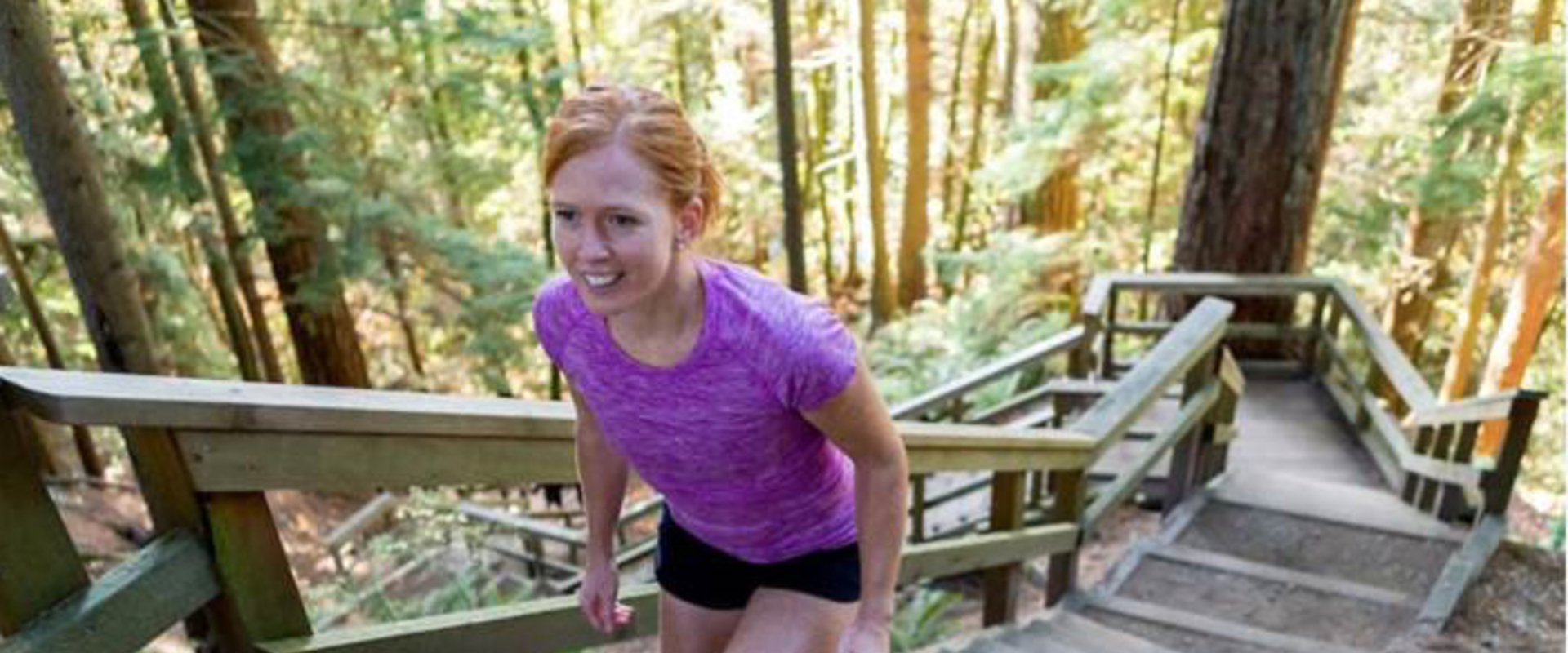
Seek the Peak Training: Trail Running Tips
Posted by Grouse Mountain May 15, 2018
Our 15th annual Seek the Peak race is fast approaching we want to make sure you have all the info you need to rock those race day hills. Stay tuned as we share some helpful training and preparation tips to support your journey, all the way to the Peak!
Today our Seek The Peak Trainer, Marieve Legrand shares some valuable tips on trail running.
Enjoy!
1. Trail running is unique in the sense that every trail is different and presents its own challenges. Trails can range from wide gravel paths which are often a great introduction to running off-road; to technical singletrack which will expose runners to all kinds of uneven ground shaped by rocks, mud, roots and hills… lots and lots of hills!
2. When heading out for a trail run, make sure you plan ahead and let people know where you are going. Bring a cell phone (but be aware that sometimes remote areas don’t always have service), some form of ID, a map, food & fluids, and think about how far out you might be going. The beauty of the outdoors and trail running offers endless adventure possibilities. However, we all need to remember to be self-sufficient in case anything happens. Going as a group or with friends who are familiar with a specific area is always a good approach. For more information on the “10 essentials” and how to be trail-smart, please click here.
3. Most of the trails on the North Shore are multi-use, which means you might encounter hikers, mountain bikers and even sometimes horseback riders. Please always be courteous, ie; be nice! – and yield to them. Always carry out anything you bring into the trails and stay on marked paths. Running trails does require a lot more concentration than road, as one constantly has to adjust their gait pattern according to the various ground obstacles. I often joke that it took me years to even talk while running! As soon as I would start chatting, I was always bound to miss a root and trip! Think about looking 4 steps ahead of you and visualize your “line”. This will become easier over time, even as you start running faster.
4. I often talk about “time on feet”. Anyone switching from road to trails will tell you that your pace will generally be a lot slower while running trails. Running according to effort – or even heart rate - and time spent on trails is a better overall approach. As you explore new trails and terrain, an out-and-back run can allow you to gain more confidence in your pace and speed. As a bonus, trails look significantly different in one direction vs the other, so it’s a 2 for 1, win-win situation.
5. Walking hills is ok! The main thing to keep in mind is to maintain a consistent effort. Power hiking offers decent speed while saving a lot of precious energy which will be needed to start running again once you crest the top of the hill. Take short, quick steps and use your arms to power up the hill.
6. Downhill running can be enjoyable! The main thing to think about is to let your legs run, and not break. For gradual non-technical hills, allow your body to lean forward and let your legs and gravity do some of the work! If the downhill is more technical, think about shortening your stride (as if you were quickly going down some stairs) and always use your arms for balance.
7. Trail shoes will change your life! If you are serious about giving trail running a go, it is a good idea to invest in a pair of trail running shoes. They are designed to provide better contact with the ground and the thread offers more grip than a road shoe can.
